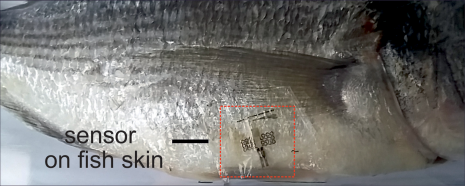Microsensors are already in use for various purposes. They come with precious metals that are both helpful and toxic to both humans and environment. They are not suitable for medical applications involving direct contact with the human body or for inclusion in food products.
Thus, they are the subject of interest for various scientists for applications in industries and research. A team of scientists from various institutes at ETH institutes working on biodegradable microsensors for temperature measurement.
They are creating biodegradable microsensors by packing a superfine, tightly wound electrical filament made of magnesium, silicon dioxide and nitride in a compostable polymer. Magnesium is essential in food as it helps more than 300 biochemical reactions in the body. On the other hand, silicon dioxide and nitride are biocompatible and dissolvable in water.

Scientists created the polymer to pack microsensors, from potato starch. The overall composition of the microsensor complies with EU and US foodstuff legislation.
According to Giovanni Salvatore, one of the researchers in the team, these biodegradable microsensors have a bright future. He also cited one potential application: “In preparation for transport to Europe, fish from Japan could be fitted with tiny temperature sensors, allowing them to be continuously monitored to ensure they are kept at a cool enough temperature.”
He further said, “Our sensors are suitable for use in foodstuffs and are no threat to consumer health. The sensors also need to be small, robust and flexible enough to survive in containers full of fish or other food products.”
The newly developed sensors are just 16 micrometers thick i.e., much thinner than a human hair. Having only a few millimeters of length, the sensors weighs about a fraction of a milligram. In addition, dissolves completely in a one-percent saline solution over the course of 67 days.
Salvatore said, “It’s relatively easy to extend the operating life by adjusting the thickness of the polymer. A thicker sensor would be less flexible, however. The current sensor is so thin. It continues to function even if it is completely crumpled or folded. Even when stretched by around 10% of its original size, the sensor remains intact.”
For the power supply, researchers have connected the sensor to an external micro battery using ultra-thin, biodegradable zinc cables. This makes it possible to monitor the temperature of a product over a range of 10 to 20 meters.
Salvatore is confident that it will soon be possible to produce such sensors for the mass market, especially as the methods of printing electronic circuits are becoming increasingly sophisticated.
He said, “Once the price of biosensors falls enough, they could be used virtually anywhere,” Salvatore says. Sensors would provide the link between the physical and digital world, bringing food products into the Internet of Things. Their use would not be limited to temperature measurement either: similar microsensors could be deployed to monitor pressure, gas build-up and UV exposure.”
According to scientists, these biodegradable sensors will be part of our everyday lives within 5 to 10 years. Still, further research is still required to make these sensors as our day to day part of life without concerning human health and environment.
